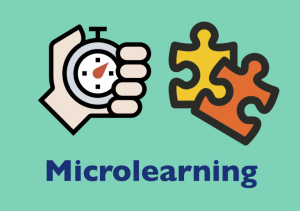Elearning pricing: Understanding the costs involved
Included in this article
What does an elearning solution cost
The pricing of elearning solutions varies widely depending on a number of factors. For instance the type of elearning being used, the number of employees being trained, and the duration of the training program. Some companies may choose to use off-the-shelf elearning software, while others may develop custom elearning programs.
Off-the-shelf elearning software can typically be purchased for a one-time fee or on a subscription basis. Prices can range from a few hundred dollars to tens of thousands of dollars, depending on the features and capabilities of the software.
Custom elearning solutions can be more expensive than off-the-shelf software. But this type can be more tailored to the specific needs of your company. Development costs can vary widely. It depends on the complexity of the program and the experience of the development team. A rough estimate would be from $50,000 to $500,000 USD.
With elearning, long-term cost savings are achievable. Online lessons are typically less expensive than regular sessions, which explains why. Elearning removes the requirement for travel or classroom rental costs.
It’s a very good idea to have a clear understanding of what your goals for elearning are. First and then to look for elearning solutions that meet those goals within the budget. The pricing of elearning solutions usually reflects the level of functionality it offers. With basic elearning content libraries on one end and fully fledged Learning Management Systems on the other end. You should distinguish between your must-have and nice-to-have features for an elearning solution. Remember to stick to the must-haves when determining how best to spend your elearning budget.
How to know if an elearning solution is overpriced?
Price transparency can be an issue when comparing elearning solutions. What does it actually cost? Are there hidden fees? How can I be sure that I am not overpaying for an solution?
Here are a few tips to help you determine if the solution is overpriced:
Compare prices
One way to determine if the price is too high is by comparing the costs with similar solutions on the market. Look for solutions that offer similar features and capabilities and compare their prices. If you find that a solution is significantly more expensive than others on the market, it’s probably overpriced.
Assess the value
Another way to determine if an elearning solution is overpriced is to assess the value that it provides for your company. Consider the impact that the elearning solution would have on your business goals and the overall return on investment. If the cost of the solution is not justified by the results it provides, it might be overpriced.
Carefully examine the vendor’s pricing structure
Compare the vendor’s pricing structure with the industry standards and ask questions about the pricing. Are they charging extra for add-ons, support, or maintenance? Do they provide more features than other vendors in the same price range? Do they offer a flexible pricing system that fits the price to your organization’s size and needs?
Look for honest client reviews
Sites like Capterra offer unbiased client reviews for many software and elearning solutions. If an elearning vendor has a history of over-pricing its solutions this will probably be clear after spending just 30 minutes looking for and reading client reviews.
Consider the Total Cost of Ownership (TCO)
Elearning solutions can have hidden costs, such as customization, maintenance, usage levels, and support. Make sure always to consider the TCO of the solution and compare it with other solutions that fit your organization’s needs and budget.
Consult with industry experts
Especially if you’re working with a high budget to spend, you should consider consulting with industry experts or elearning solution providers. They will have a better understanding of market prices and could provide valuable insights.
By taking these steps, you should be able to determine if an elearning solution is overpriced and whether it is a good value for your company. Keep in mind that the cheapest solution might not always be the best solution and the most expensive might not be the best value for your organization.
Step-by-step guide to choosing the best elearning solution for your company
Choosing the best elearning solution for your company will depend on a variety of factors, including your company’s specific needs, budget, and resources. Here are a few steps you can take to help you make an informed decision:
1. Define your learning objectives
Before you begin your search for an elearning solution, it’s essential to have a clear understanding of what you want to achieve with your training program. What skills or knowledge do you want your employees to gain? What impact should the training have on your business goals? Having a clear set of learning objectives will help you identify the features and capabilities that are must haves for your company and which features are nice to have but you can live without if needed.
While you’re here, make sure to check out our free whitepaper on How to Develop a Best Practice elearning Content Strategy for your company.
2. Assess your budget and resources
Elearning solutions can range in cost from a few hundred dollars to hundreds of thousands of dollars, depending on the features and capabilities of the software. It’s important to have a clear understanding of your budget before you begin your search for a solution.
3. Research different elearning options
There are lots of elearning solutions available, including off-the-shelf elearning software, custom-developed elearning programs, and third-party providers. Researching different options will help you understand the pros and cons of each type of solution and will help you narrow down solutions that meet your company’s specific needs.
4. Validate the elearning solution
Before making a final decision, it would be useful to validate the elearning solution. One way to evaluate it is to test the solution with a small group of employees, or to pilot the program with a small group before rolling it out to the entire company. This will help you assess the effectiveness of the solution and make any necessary adjustments before the full launch. Many elearning vendors such as Bookboon Learning offer free or low-cost trials for your company so you can validate the ROI of the solution before you invest long-term.
5. Does it integrate with your Learning Management System (LMS)
The LMS acts as an interface between the elearning solution and your company’s learners. An LMS is a powerful tool to manage learners and track their progress, it can also report on their performance, engagement, and compliance. Consider how the elearning solution integrates with your current LMS or systems, how easy it is to use, and how well it provides the metrics you need to evaluate your elearning program.
6. Consider support and maintenance
The elearning vendor should be able to provide a reliable and responsive support system, in case of any issues, bugs or compatibility. Also, look at the vendor’s update policy, and make sure they will continue to maintain and update the solution to provide better user experience.
By taking the above steps, you should be able to identify an elearning solution that meets your company’s specific needs, budget, and resources.
How to negotiate the best price for an elearning solution
Negotiating the best price for an elearning solution can be a complex process that takes some experience. However, here are a few tips that can help you broker a better price for your elearning solution:
Be prepared, and do your research
Before starting negotiations, make sure to do your research on the elearning solution you are interested in. Understand the features and capabilities of the solution, compare it to similar solutions on the market, and determine what you think a reasonable price range for the elearning solution would be and why. This information will give you a good starting point for your negotiations.
Try to understand the vendor’s perspective
It’s important to understand the vendor’s perspective and the costs associated with developing and maintaining an elearning solution. Understanding the vendor’s costs can help you to appreciate their pricing structure and enable you to have a more informed negotiation.
Be clear about your needs
Be clear about your organization’s needs and how the elearning solution will be used. Make sure to communicate what you’re looking for in an elearning solution, including specific features and capabilities, and the number of employees that will be using it. This will help the vendor understand what you need and will make it easier for them to provide you with an accurate price quote.
Don’t give them too much information
While you want to give the elearning vendor enough information to about your needs to provide you with an accurate price quote, be careful not to share too much insight into which features, or benefits are the most important for you. Having too much information will give the elearning vendor leverage in the price negotiation phase.
Look for volume discounts
Many elearning vendors offer volume discounts if you purchase multiple licenses or subscriptions. If your organization plans to implement an elearning solution for a large number of employees, it may be beneficial to negotiate a volume discount.
Consider long-term contracts
Some vendors may be willing to negotiate a lower price if you agree to a rolling agreement or multi-year contract. While it’s important to consider the total cost of ownership, a long-term contract can offer a significant savings over a shorter contract period.
Ask for references
If an elearning vendor is offering a lower price than similar solutions on the market, ask for references to ensure that the solution is of good quality and that it meets your needs. Having credible references that allow you to present specific criticisms of the elearning solution can also be used as a bargaining tool.
Be polite and assertive
Be polite and assertive during the negotiation process. Keep in mind that the elearning vendor wants to make a sale, and they may be willing to negotiate if they believe it will lead to a long-term partnership.
Always get it in writing
Once you’ve reached an agreement with the elearning vendor, make sure to get the details of the agreement in writing. This will protect you if there are any misunderstandings or if the vendor fails to deliver on their promises.
By following these tips, you should be able to negotiate the best price for an elearning solution that meets your company’s needs and fits within your budget. Keep in mind that the negotiation process is a two-way street, and that compromise is expected from both parties.
Where to find low-cost elearning for your company
Many companies these days are working with lower elearning budgets. If this is the case for your company as well, here are a few places where you can find low-cost elearning solutions for your company.
To see how companies are using elearning to create a culture of learning, listen to our free podcast by industry expert Josh Bersin on How to Revive a Culture of Learning in Your Organization.
Off-the-shelf elearning software
There are many off-the-shelf elearning software solutions available that are affordable and easy to use. Companies like Bookboon Learning and The Access Group offer cost-effective off-the-shelf elearning solutions for businesses.
Open-source elearning software
Open-source elearning software is available for free, and it can be modified and customized to fit the specific needs of your organization. Some examples of open-source elearning software include Moodle and Open edX.
Online course marketplaces
There are several online course marketplaces where you can purchase individual courses or subscriptions to a library of courses at a low cost, such as those offered by Coursera and Udemy.
Freelance elearning designers
Some companies choose to hire freelance elearning designers to create custom elearning solutions. Because these designers typically work on a project-by-project basis, they may be able to provide solutions at a lower cost than larger elearning development companies. Referred to as “gig-based elearning”, hiring freelance elearning designers is one of the top learning and development trends in 2023.
Non-profit or educational institutions
Some non-profit or educational institutions offer free or low-cost elearning solutions for companies, for example Khan Academy for Business and edX for Business.
It’s important to note that while these elearning solutions may be low-cost, it’s still important to do the necessary research and due diligence to ensure that the elearning solution still meets your organization’s specific needs and provides a solid return on investment.
Mistakes not to make when choosing an elearning solution
For many companies, choosing an elearning solution is a big decision that involves a significant investment. To help make sure you don’t fall victim to the same mistakes as others, here are a few of the most frequent mistakes companies make when choosing an elearning solution.
For more steps you can take to avoid costly mistakes, check out our free podcast on the 20 Questions L&D Professionals Should Ask Before Investing in an elearning Solution.
Failing to define learning objectives
One of the most common mistakes companies make when choosing an elearning solution is they fail to accurately define their learning objectives. Without a clear understanding of what you want to achieve with their training program, you risk ending up selecting an elearning solution that does not meet your needs.
Failing to evaluate how it integrates with your other systems
For most companies, an elearning solution will need to operate in tandem with their other systems, such as a Learning Management System (LMS), or company intranet. You need to evaluate how well the elearning solutions you are considering integrate with your other systems. Will it require additional IT work either by yourself or the vendor in order to connect the systems? This can be very costly.
Not considering scalability
Companies often choose an elearning solution that is not scalable and can’t handle their needs as their company grows. This can limit the elearning solution’s effectiveness and could lead to additional costs as the company has to purchase another solution that can handle more learners or more complex courses.
Neglecting mobile compatibility
Many companies choose elearning solutions that are not compatible with mobile devices, yet a significant number of employees access learning content on their mobile devices. This can make it difficult for employees to access the content they need and can negatively impact their engagement and overall learning experience.
Not evaluating enough solutions before purchasing
Another common mistake companies make is failing to evaluate enough elearning solutions before making a purchase decision. By not piloting or testing a solution before buying, companies can overlook potential issues or compatibility problems, or they might miss features that they would have found important.
Neglecting the cost of maintenance and support
Companies often choose solutions that have lower upfront costs but fail to consider the ongoing costs of maintenance and support, this could end up being more expensive in the long run, especially when there are bugs or issues.
Not considering the Return on Investment (ROI)
Companies should always try to calculate the ROI of an elearning solution before purchasing it. If the expected results and business impact from the elearning solution doesn’t seem to justify its cost, it probably isn’t worth the investment.
By avoiding these common mistakes, companies can increase their chances of selecting an elearning solution that meets their needs and delivers the results they are looking for.
Overall, cost is an important factor to consider when choosing an elearning solution because it can have a major impact on the budget and return on investment for a business or organization. Elearning solutions can vary greatly in price, from free open-source options to expensive proprietary software, and the cost will depend on the features and functionality that are required. Make sure you do your due diligence before choosing an elearning solution and I hope you can use a lot of the advice above to make an informed decision about the cost of your elearning investment.
Modern L&D Strategy by Nick van Dam
Download a free copy of our best-selling eBook with the newest trends in Learning & Development strategy by the former Global Chief Learning Officer at McKinsey & Co.

Free Learning & Development content

Maximizing Your L&D Budget: Strategies for Securing Funding
Learning and Development (L&D) professionals know that a solid L&D budget is essential for providing quality training and development opportunities for employees. But how do you make the case for more L&D funding within your organization?

How to use technology to streamline L&D cost and increase efficiency
Here are 11 easy ways to use technology to get the most out of your L&D efforts:

ChatGPT in Learning and Development: 10 Ways to Streamline Processes and Save Time
In this article, we will explore ten ways to use ChatGPT in Learning and Development. Discover how to improve processes, save time and money.




































